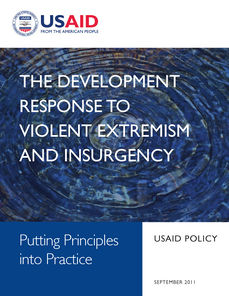"Violent extremism"
(enemy image, “extremism”, plastic phrase) | |
|---|---|
| Start | July 2005 |
| Interest of | • Counter Extremism Project • International Center for the Study of Violent Extremism • Amil Khan • Alex Schmid |
| A drop in replacement for "terrorism" that was followed by "non-violent extremism", a term used to frame the justification of violence towards the explicitly non-violent. | |
"Violent extremism" is an enemy image which was introduced in July 2005 as a synonym of the contested word "terrorism". After laws were introduced, in January 2011 the phrase "non-violent extremism" was launched to try to extend "anti-extremism" laws towards the explicitly non-violent.
Contents
Official narrative
A webpage posted at cve.fbi.gov in February 2016 claimed that "It’s the FBI’s primary responsibility — working with its many partners — to protect the nation from attacks by violent extremists."[1] This replaces their earlier priority (since 2013) of "national security".
History
"Violent extremism" was introduced after the 7/7 bombings and the use was expanded most notably after the Charlie Hebdo event. In 2013, Wikipedia created a redirect page to "Extremism". In December 2016 this was expanded into a full article.[2]
Legal status
The Quilliam Foundation "has long argued for a tougher line on non-violent extremism".[3]
Internet censorship
In July 2017, YouTube announced that they would be modifying their website "to provide more resources and more content that can help change minds of people at risk of being radicalized". In practice, this seems to allied to the "war on terror" project.[4] In October 2017, Reuters reported seeing documents that indicated that the U.S. government would be subjecting "homegrown violent extremists" to physical or digital surveillance.[5]
Related Quotations
| Page | Quote | Author | Date |
|---|---|---|---|
| "Extremism" | “the distinction between “non-violent extremism” and “violent extremism” is not a valid one.” | Alex Schmid | May 2014 |
| "Non-violent extremism" | “It can even be argued that ‘non-violent extremism’ is a contradiction in terms. While there can be non-violent and violent radicals, it makes, in my view and based on the distinction between radicalism and extremism elaborated above, less sense to distinguish between violent and non-violent extremists.” | Alex Schmid | March 2013 |
| Fatima Lahnait | “Spain remains a target for Islamist extremists. Moreover, like other European countries, it is now facing an increasing radicalisation phenomenon that may lead to violent extremism and home-grown Islamist terrorism.” | Fatima Lahnait | 2018 |
| Peter Neumann | “No one I know has done more on the ground with practical experience countering violent extremism than Hanif Qadir. His experience and expertise is something we can all learn from. For anyone interested in counter-extremism, his book is an absolute must read.” | Peter Neumann | |
| Religion | “Some years ago, a leaked MI5 behavioural study of pathways to terrorism concluded that there was no single profile or pathway to violent radicalisation. It also found, contrary to conventional assumptions, that religious conservatism tended to act as a bulwark against extremism.” | Nafeez Mosaddeq Ahmed | 13 February 2015 |
References
- ↑ http://web.archive.org/web/20160210033042/https://cve.fbi.gov/
- ↑ https://en.wikipedia.org/w/index.php?title=Violent_extremism&action=history
- ↑ https://www.ft.com/content/e6bd474e-2f00-11e5-91ac-a5e17d9b4cff
- ↑ https://youtube.googleblog.com/2017/07/bringing-new-redirect-method-features.html
- ↑ http://www.reuters.com/article/us-usa-cyber-surveillance-exclusive/exclusive-u-s-widens-surveillance-to-include-homegrown-violent-extremists-documents-idUSKBN1CU1H6

